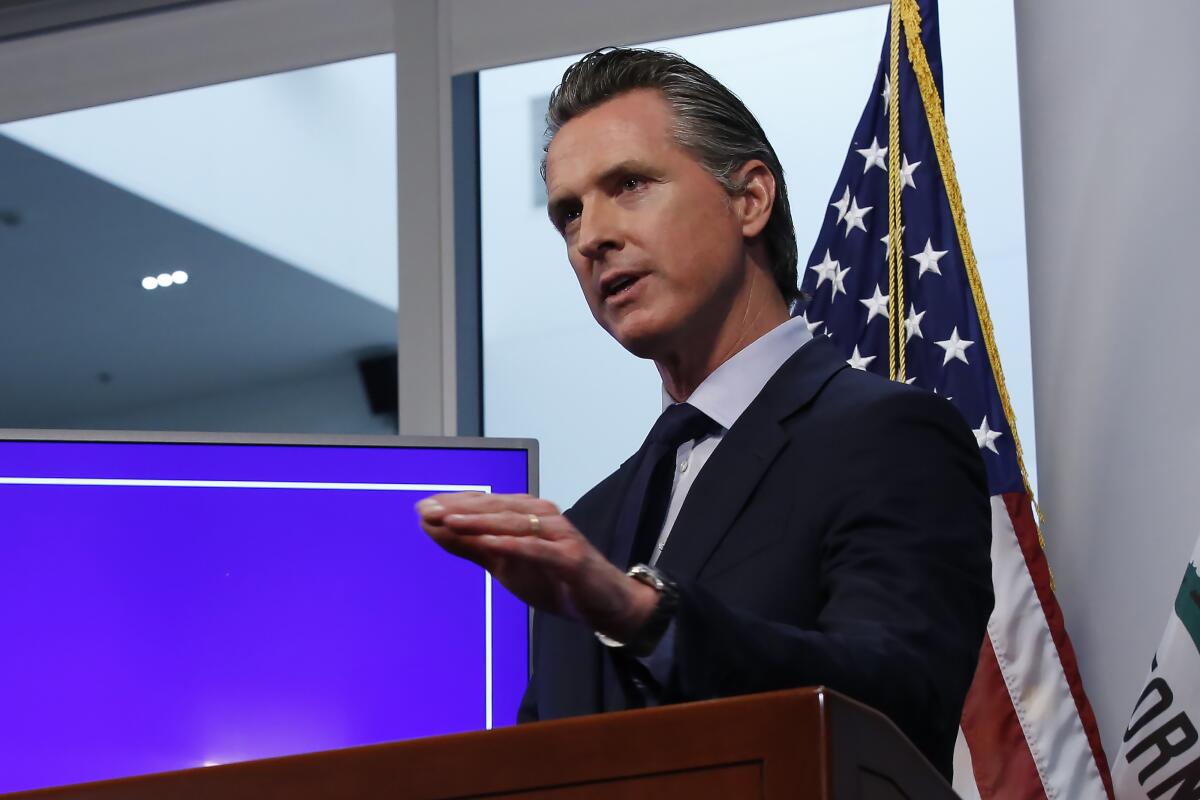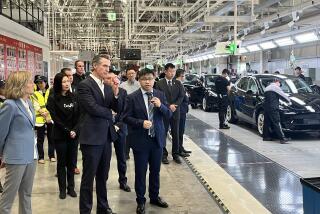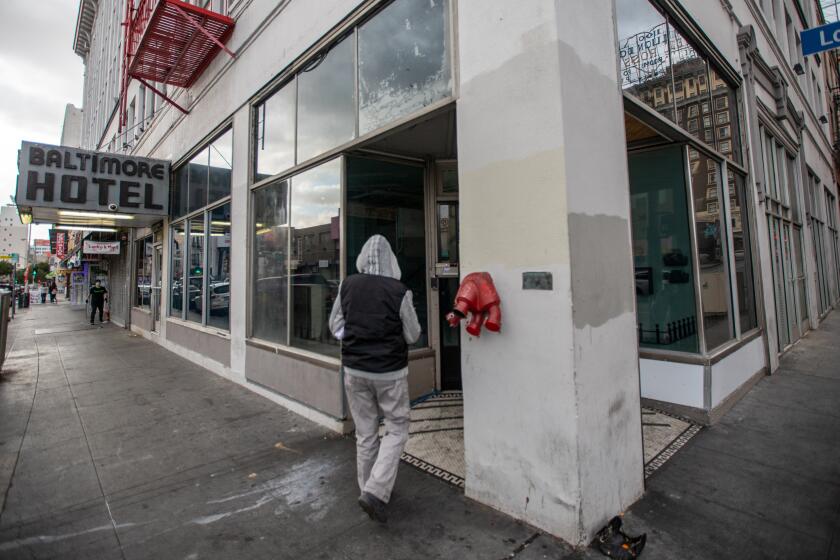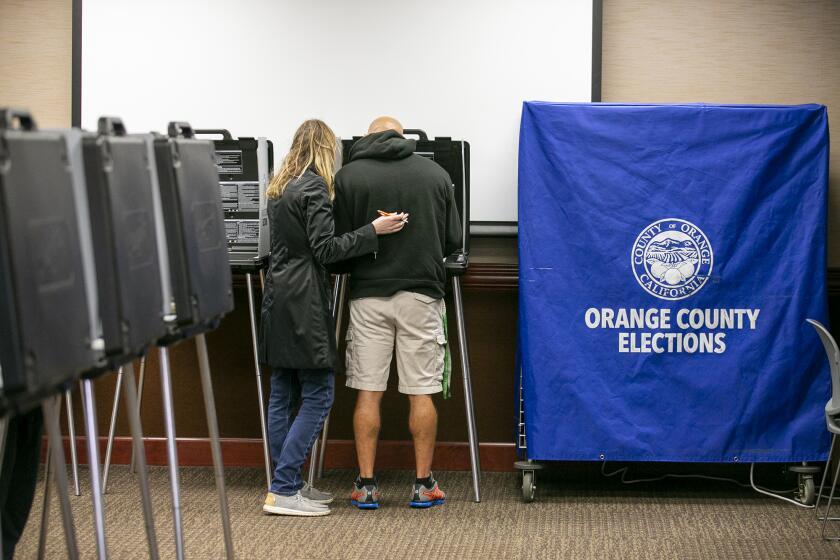Stuck between allies in tech and labor, Newsom won’t weigh in on Uber-backed Prop. 22

Statewide polls suggest California voters are having a difficult time picking sides on Proposition 22.
And so is their governor.
Stuck between his allies in the Bay Area tech industry and the labor unions that dominate Democratic Party politics, Gov. Gavin Newsom has declined to endorse either side of the costliest ballot measure campaign in U.S. history and one that could reshape the app-based workforce.
“There are no two constituencies more important to Gavin Newsom than tech and labor,” said Nathan Ballard, a former advisor to Newsom when he served as mayor of San Francisco. “He really believes down to his bones in the labor movement and he is also very much a peer of the tech industry’s leaders.”
Newsom’s reluctance to take a position has sidelined him in one of the biggest debates about the future of work in the state, a fight with enormous consequences for business, government and Californians across the political spectrum.
It is not for a lack of interest. Newsom created a commission last year to make recommendations about how the state should support economic growth and workers in a disruptive digital age and campaigned on pledges to address the future of work. He wrote “Citizenville,” a 2013 book about using technology to modernize government. And he tapped a veteran labor advocate as one his closest advisors.
The governor also hasn’t shied away from other high-profile battles this election cycle, endorsing Proposition 15 to increase property taxes on businesses and Proposition 16 to reinstate affirmative action. He opposed Proposition 21, a measure to expand rent control and a topic that will persist at the Capitol.
But his unwillingness to state a position on Proposition 22 also speaks to a larger truth about his leadership style, said David McCuan, chair of the political science department at Sonoma State University.
“He often talks about those ‘big, hairy, audacious goals,’ but he takes a pass on the biggest ‘big, hairy, audacious goal’ on the ballot,” McCuan said. “Having friends on both sides makes a convenient excuse to say you don’t want to get involved when you should be developing a coalition that leads, not a coalition that stands by the side when the parade goes by.”
The question posed to voters in Proposition 22 — whether Uber, Lyft and other app-based companies should be exempt from state law that classifies their workers as employees, requiring them to provide an array of workplace benefits — has been easier for other Democratic leaders to answer. Presidential candidate Joe Biden and vice presidential contender Sen. Kamala Harris have sided with unions and endorsed the opposition campaign.
The opinion of Newsom, who has publicly empathized with the struggling worker and rose to power as a businessman in the shadow of Silicon Valley, is less clear.
Last year, the governor urged a compromise between the app-based companies and labor unions during legislative deliberations over Assembly Bill 5, which he would later sign into law. The bill codified and expanded a state Supreme Court ruling that paved the way for classifying more gig workers as employees instead of independent contractors, a move that posed a threat to app-based companies and the innovation economy Newsom has embraced since the start of his career.
Reasons why those negotiations— which could have created a unique employment classification for workers of app-based companies — failed vary depending on who is asked. At least three things are clear: Uber and Lyft presented a proposal similar to Proposition 22, labor unions couldn’t reach consensus among themselves and Newsom, for all his political power, was not able to bring the two sides together.
“We led that effort, fell short and I want to position ourselves, as it relates to this issue, in a position where we can accommodate — if there is a need, a desire — to seek some compromise on this issue,” Newsom said Thursday when describing why he’s neutral on Proposition 22. “So that’s why we maintained that position publicly.”
Newsom’s closeness with the tech industry dates back to the beginnings of his time in politics and is evident in his policies, social circles, early adoption of social media and his buzzword-laden speaking style.
Carl Guardino, former chief executive of the Silicon Valley Leadership Group, remembers meeting Newsom for the first time more than two decades ago at one of the association’s annual barbecues, which was attended by roughly 300 elected officials and chief executives.
Guardino describes Newsom at the time as an “unknown” in Silicon Valley, a new member of San Francisco’s Board of Supervisors who had started a wine shop in his 20s and received a few key appointments. The introduction was little more than a hello, but marked the beginning of a relationship that has endured since that time.
“He’s in a party where employers, including innovation economy employers, are often outright attacked or held suspect and he did not shy away from those relationships, or the importance to California of the innovation economy,” Guardino said, adding that Newsom was quickly seen as an ally to the tech industry.
That open-door policy continued into Newsom’s time as mayor when he launched a plan to meet with 100 business leaders in 100 days during his first year in office. The goal was to create relationships that he felt were lacking between the business community and City Hall.
“He often turned to tech leaders for advice and new ideas,” Ballard said, adding that tech titans are among the governor’s influencers and in his close circle of friends.
Google co-founders Larry Page and Sergey Brin attended Newsom’s wedding in Montana, with the company providing complimentary flights to guests. His close inner circle includes Salesforce founder Marc Benioff and Marissa Mayer, former chief executive of Yahoo.
Then-Mayor Newsom promoted a biotech boom in San Francisco by offering tax incentives for companies to take up residence in Mission Bay. Ballard said Newsom always had close working relationships with Uber and Lyft throughout his career.
Brian Purchia, a former spokesman and technology advisor to the then mayor, said Newsom tapped tech companies to make city government more responsive and accessible, including working with Twitter and Twilio to improve the city’s 3-1-1 service. He also made government data more available to the public and entrepreneurs.
“We brought in a lot of tech people I would say that never really had an opportunity to use their tech skills to help government,” Purchia said.
Seeking to make his role as lieutenant governor more than a stately title, Newsom spent months meeting with executives and business leaders in 2011 to develop his own economic plan for California. He worked with Guardino to set up small group meetings with dozens of chief executives and C-suite officers representing different parts of the Silicon Valley economy.
Although then-Gov. Jerry Brown short-circuited Newsom’s effort with his own economic policy, the meetings weren’t easily forgotten.
“Building relationships of trust is the coin of the realm in policy and politics,” said Guardino, who now works as an executive vice president at Bloom Energy.
Newsom’s signature on AB 5 last year came under pressure from labor unions that hold substantial influence at the state Capitol and in Democratic politics. But Newsom’s affinity for the app-based company’s business model and publicly expressed desire for a compromise deal was well known.
In a 2014 Sacramento Bee op-ed, “Don’t stifle innovation by over-regulating Uber,” he expressed concerns about government’s attempts to control the industry.
“Millions of consumers are taking advantage of this new technology, and the benefits accruing to communities around the country are clear,” Newsom wrote in the op-ed. “Transportation options are being expanded; low-range pricing has opened access; and many unemployed Californians have been able to make money as drivers for one of these companies. As these start-ups modernize the way we travel, it is up to lawmakers to create a regulatory framework that protects consumers while ensuring there is adequate flexibility for innovative and creative transportation solutions.”
Newsom condemned what he called an “onerous” California Public Utilities Commission permit process. He also cautioned the Legislature to slow the “heavy hand of regulation for fear of crushing the innovative spirit that is the hallmark of California’s economic engine” and said the regulatory structure needed to evolve with the new transportation models.
The governor confirmed his support for AB 5 last year in a Labor Day op-ed, in which he said his office was in conversations with ride-share drivers, labor unions and tech companies to find a way to allow workers to form a union and maintain their flexible schedules — a nod to the compromise he tried to broker.
Proposition 22 has been viewed as a proxy for a larger battle over the future of labor in California and across the nation. Labor unions fear the measure’s passage could mark another erosion of basic worker benefits and protections. If successful, the campaign could be replicated beyond the state’s borders by corporations with the money and technology to sway voters in their favor. Failure could send the companies back into negotiations with labor, which would have a significant upper hand.
While the outcome will mark a major win for one side, several court battles remain pending. McCuan agrees that declining to take a stance now could help Newsom negotiate the issue in the future if the measure fails, but said he already missed an opportunity to strike a deal last year and now an opportunity to lead at the ballot.
Newsom’s talk about a future of work that allows companies and workers to thrive is another example of a big picture policy agenda, such as building millions of new housing units and creating universal healthcare, smacked down by political realities, he said.
“He has the skillset and the mindset and the influencers to bring two sides, Silicon Valley and big labor, together,” said McCuan. “If you have paralysis by analysis, that you can’t go against your friends on either side, you have made a choice. You’re elected to make hard decisions. You’re elected to bring people to the table. And people look to you. This is a guy who has sky-high approval. If not now, when?”
More to Read
Start your day right
Sign up for Essential California for news, features and recommendations from the L.A. Times and beyond in your inbox six days a week.
You may occasionally receive promotional content from the Los Angeles Times.







